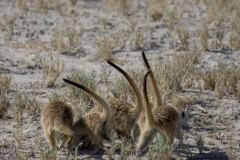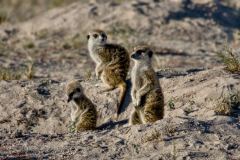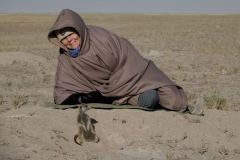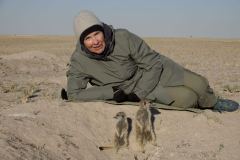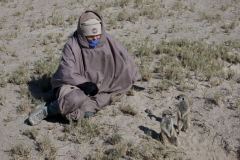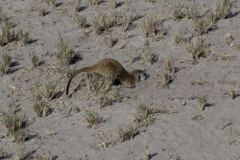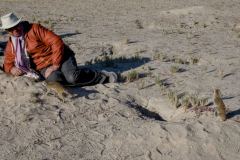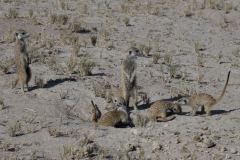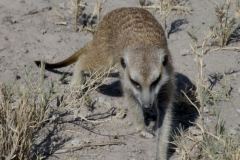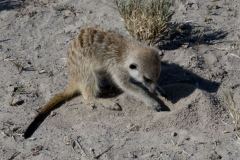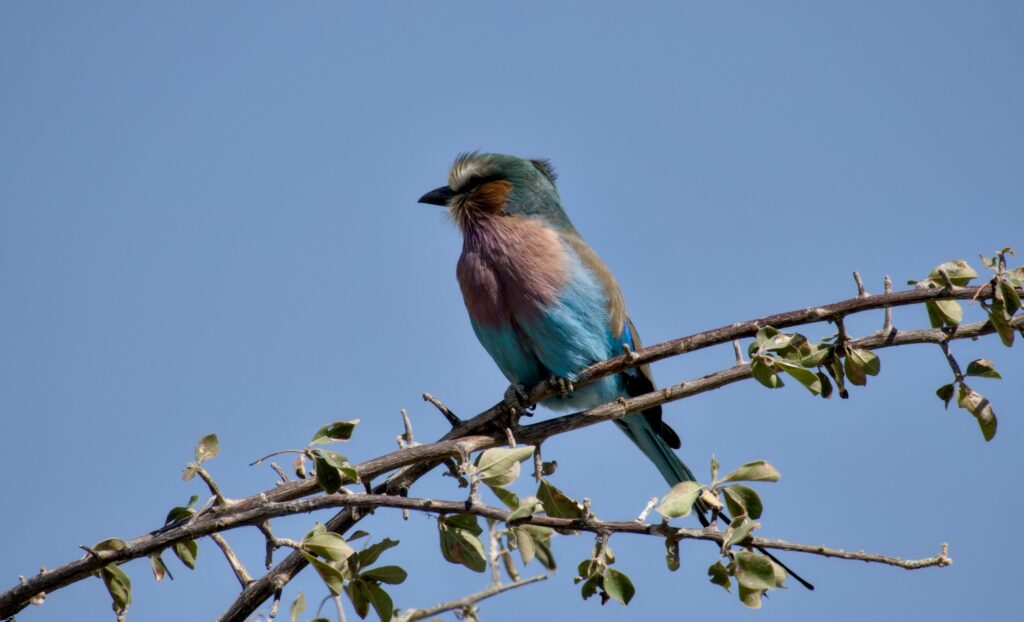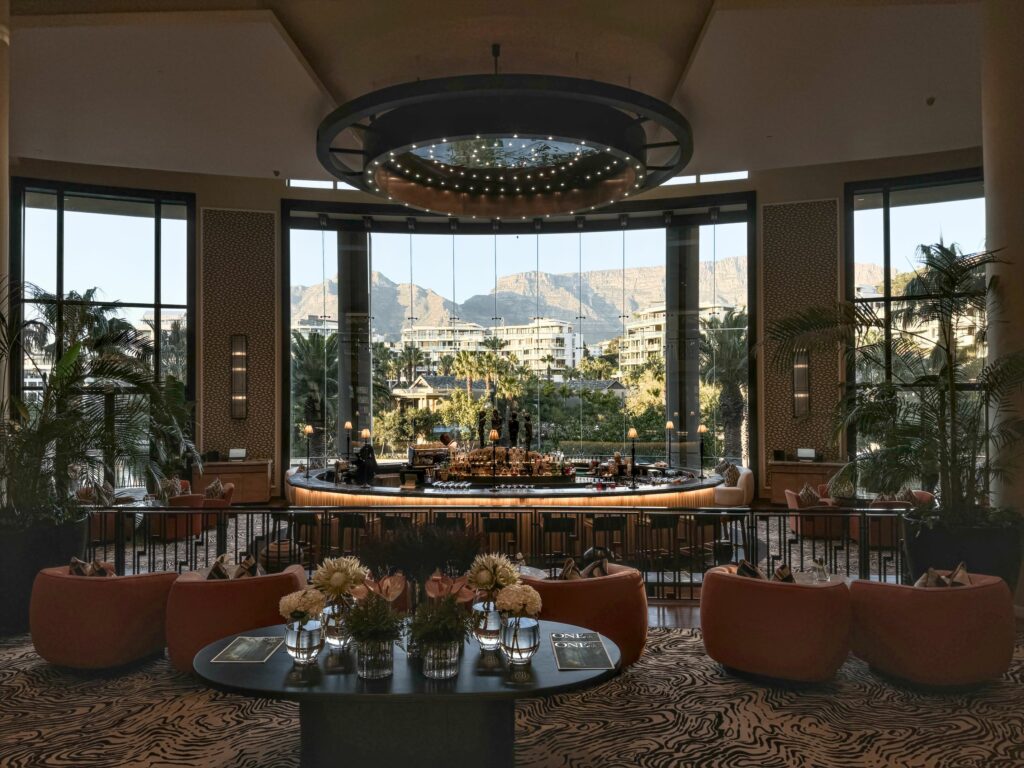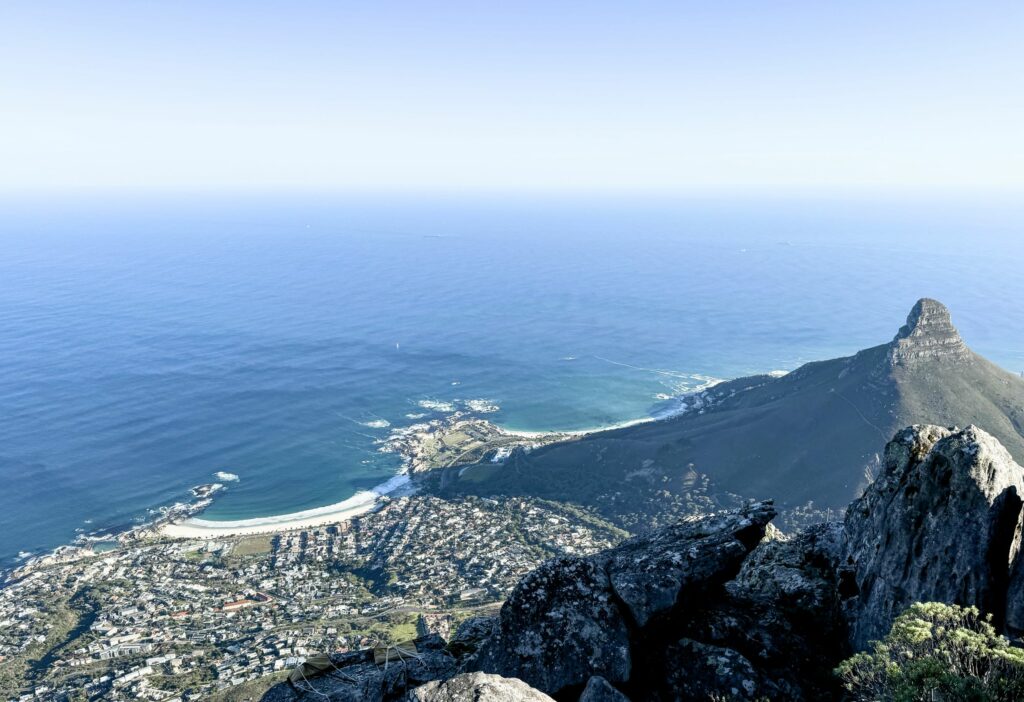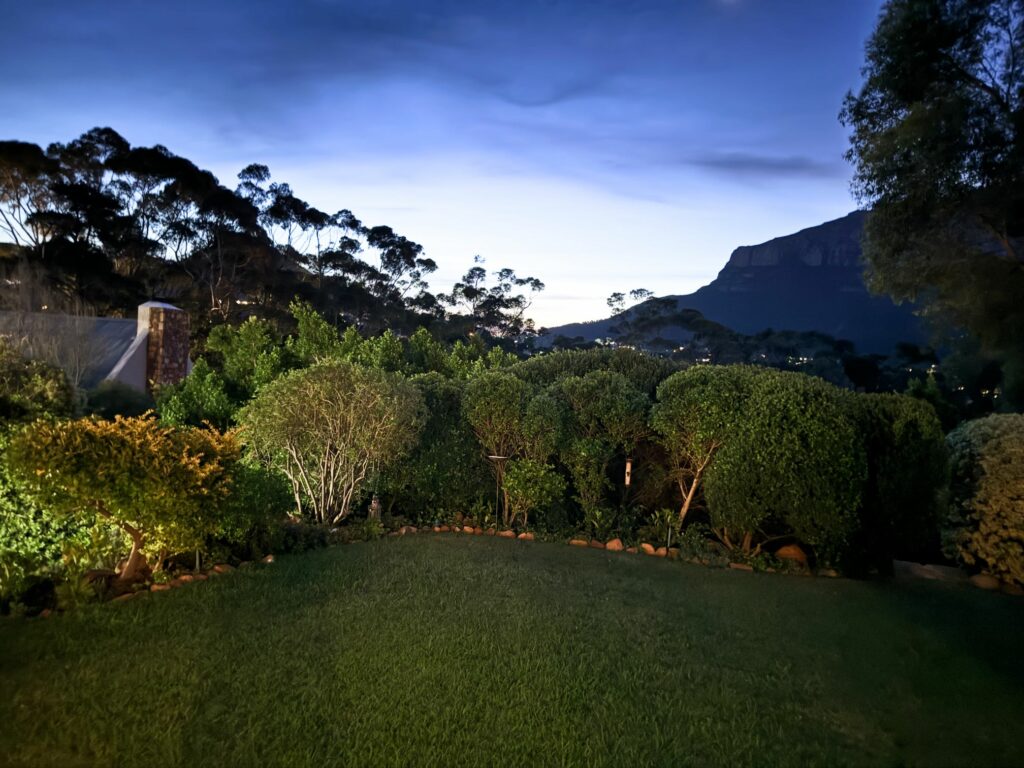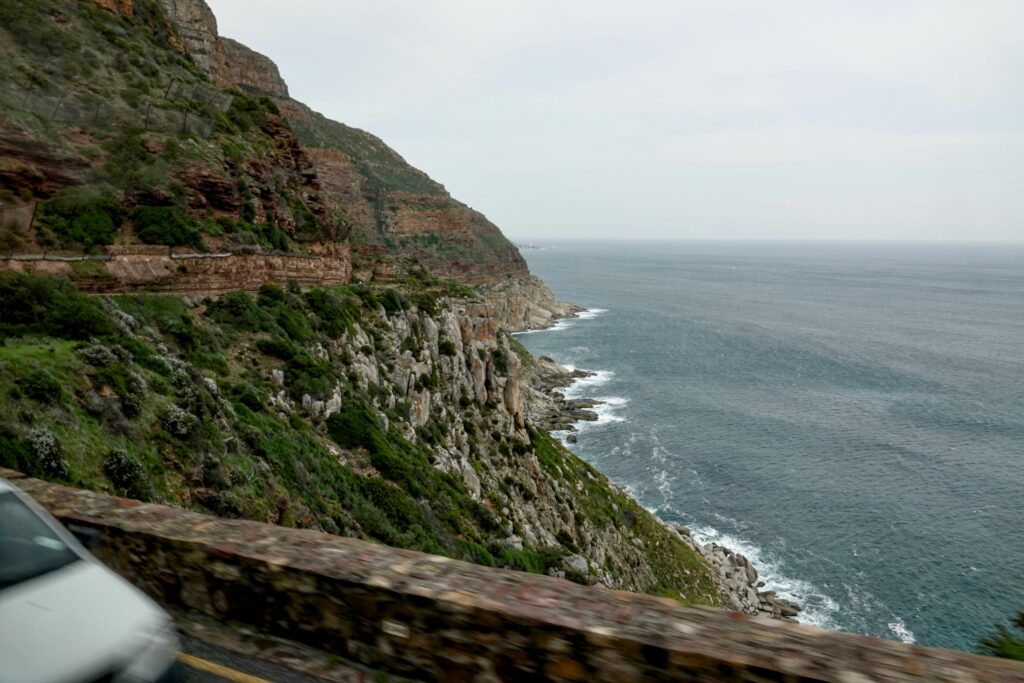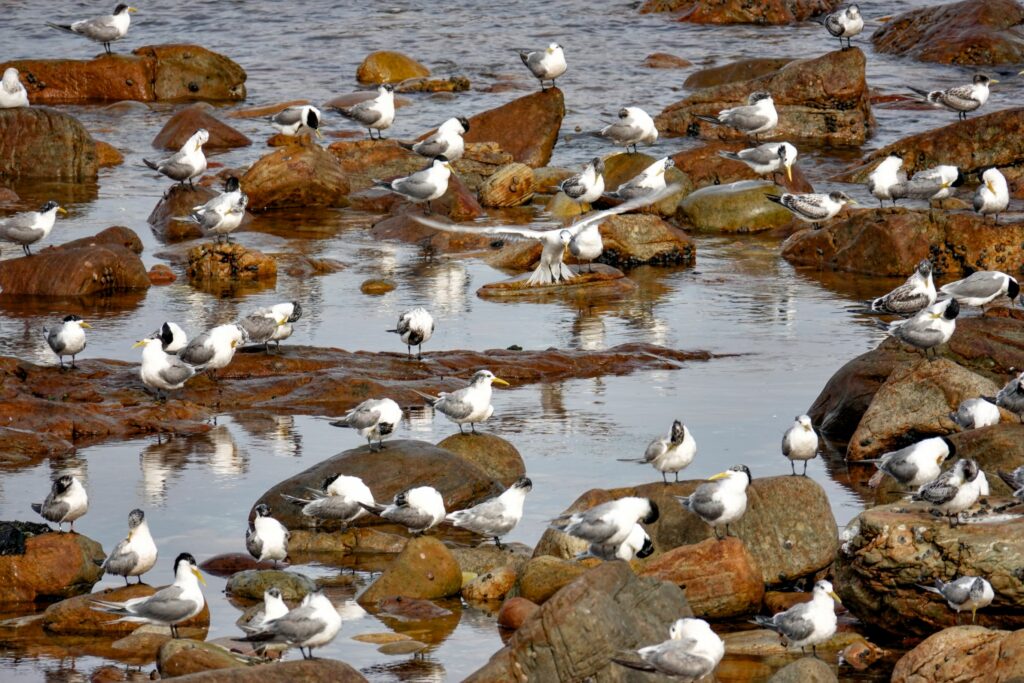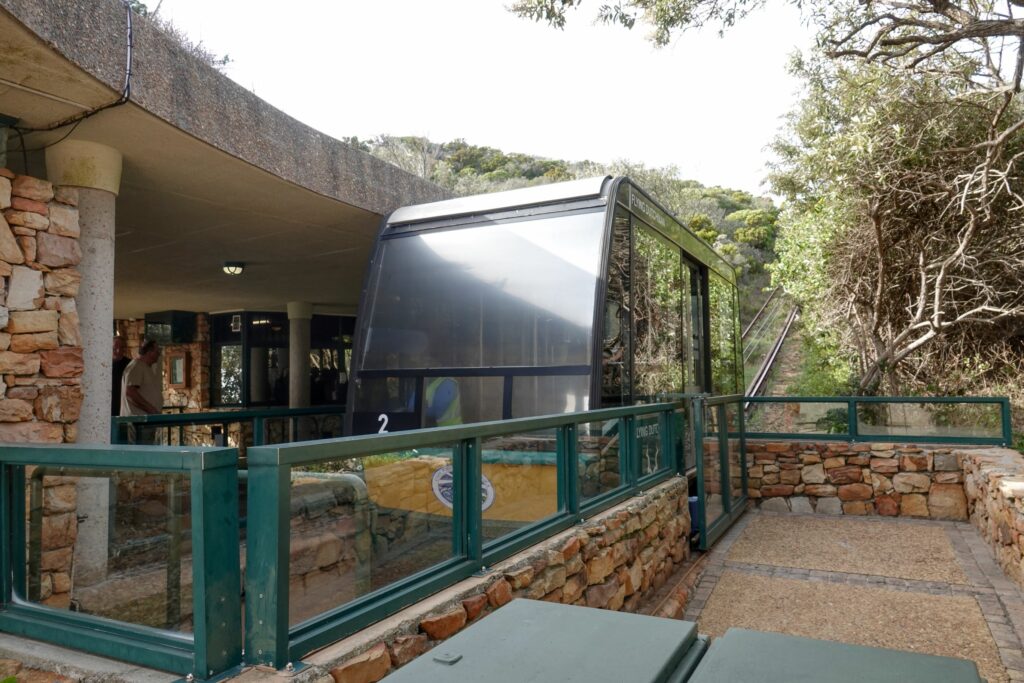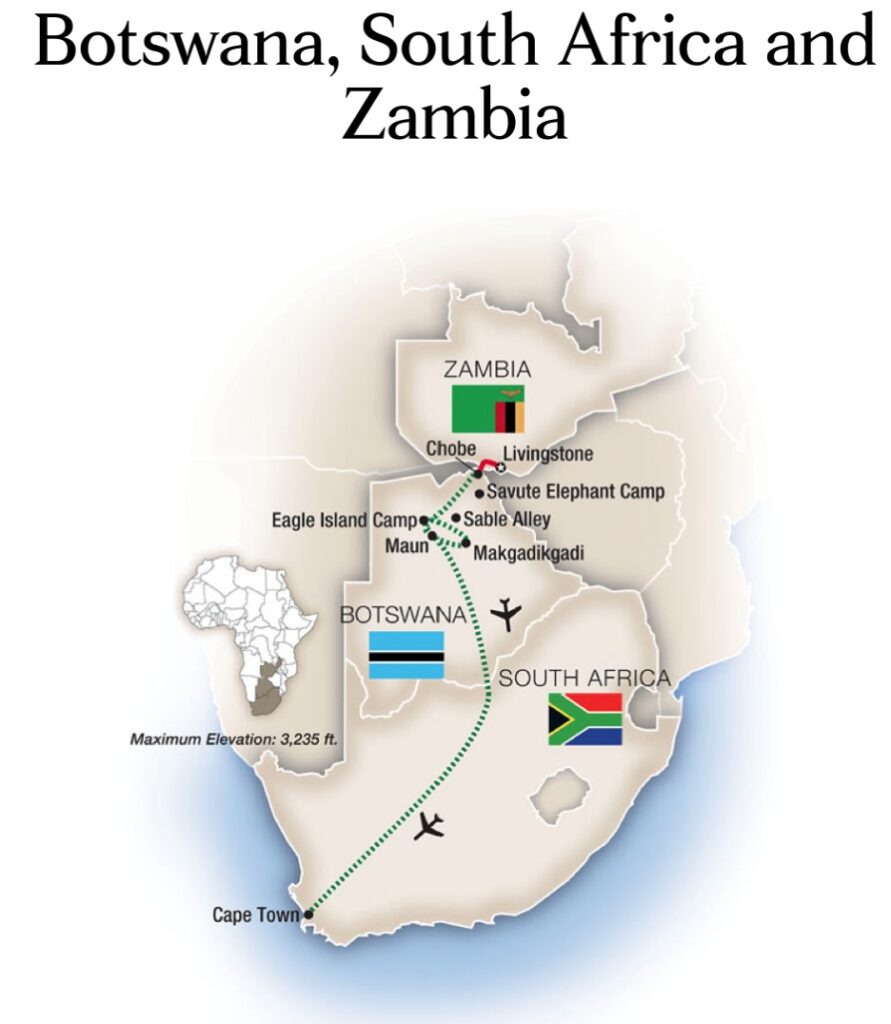Our first night in our tents on the Kalahari was FRIGID and WINDY! Remember, although very nice, we were still sleeping in tents and the outside temp was in the low 40’s with winds gusting 20 – 30 mph. But comfort was our hosts’ primary concern so every bed had 4 “bush babies” under the covers (that’s what the locals call their fabric covered hot water bottles). 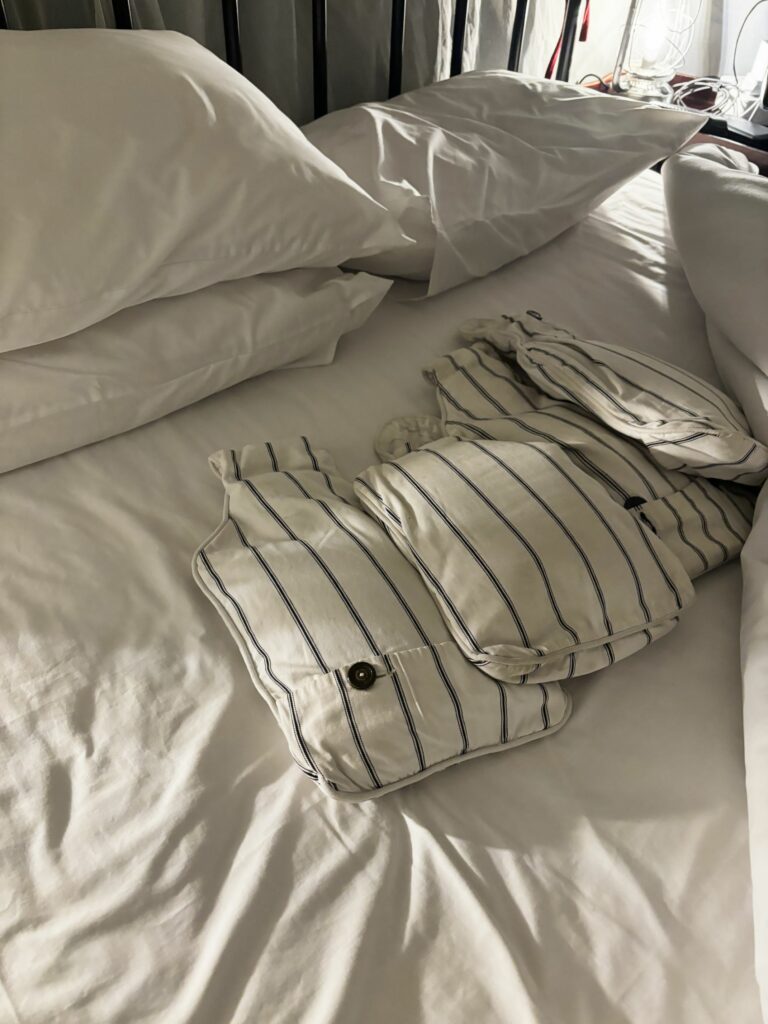
Every morning we started with a bush baby tucked on each seat of our Land Cruisers. This morning we were up before dawn to catch the meerkats, the highlight of the trip for our friend Ellen. Only this morning the winds were blowing and the temperature was hovering around 40. The goal is to find the meerkats and be in place when they first wake up to catch the morning sun, because soon after they start foraging for food.
On the way we still managed to spot an elephant and ostrich “proud.”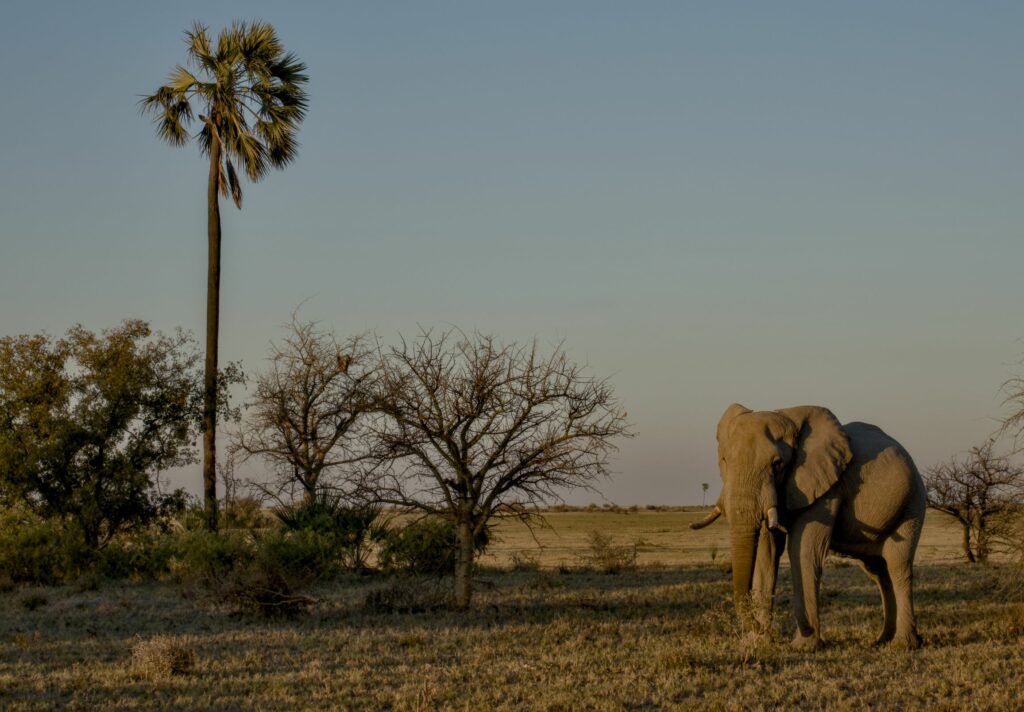
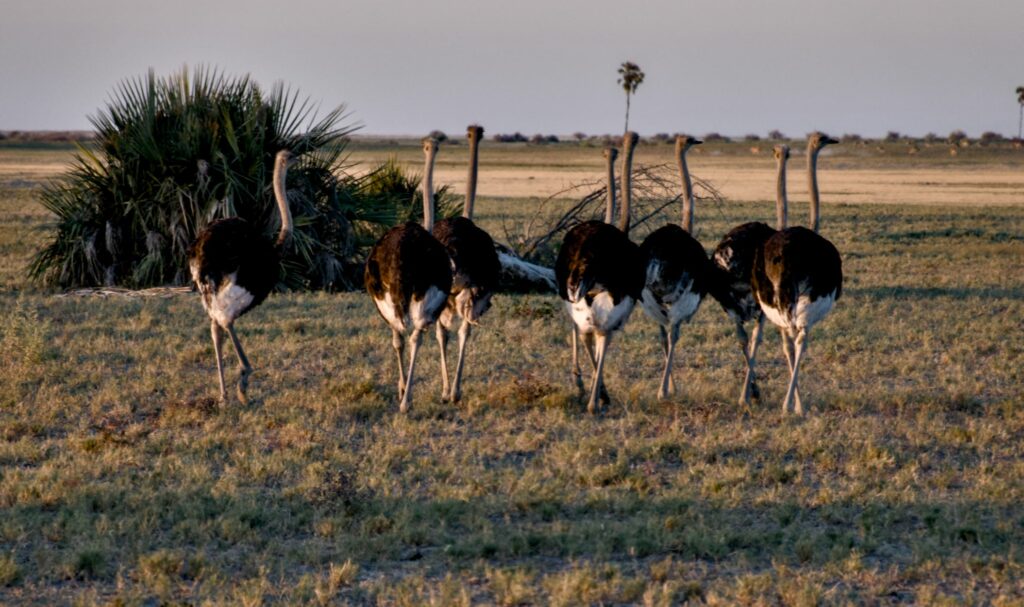
The camp pays a guide to stay with the meerkats each and every night so they can be located in the morning. If they didn’t the meerkats could up and leave their current burrows at anytime and relocate for new foraging grounds which would be difficult to relocate. So…we arrived as dawn was breaking and after a while the first meerkat sentry popped up his head…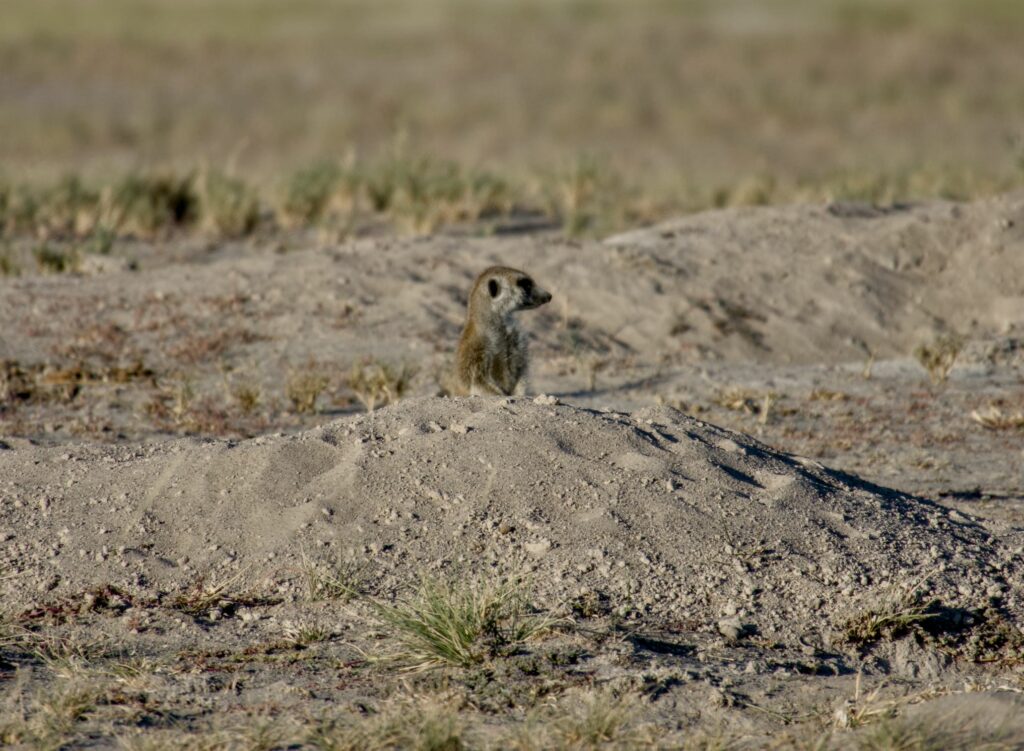
Soon after, a 2nd joined to consult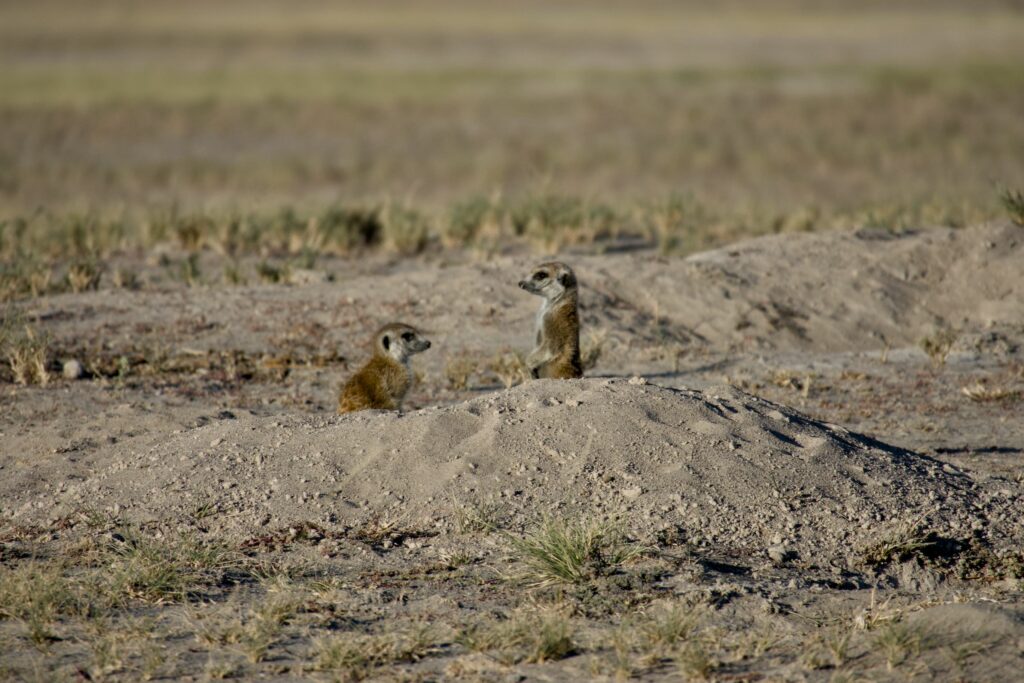
Meerkats, being smarter than we were, quickly determined it was too friggin’ cold to come out and promptly disappeared back into their burrows to wait for the sun to warm things up. Unknown to us, meerkats do not dig their own burrows, they use burrows dug by ground squirrels or mongoose in the area. Meerkats only eat bugs & grubs while the squirrels eat tubers & plants and the mongoose famously eat snakes so they don’t compete for food and have a symbiotic relation as they are all on the lookout for eagles and other predators.
Our guides determined they were not coming out any time soon so they were off to prepare our breakfast while we waited.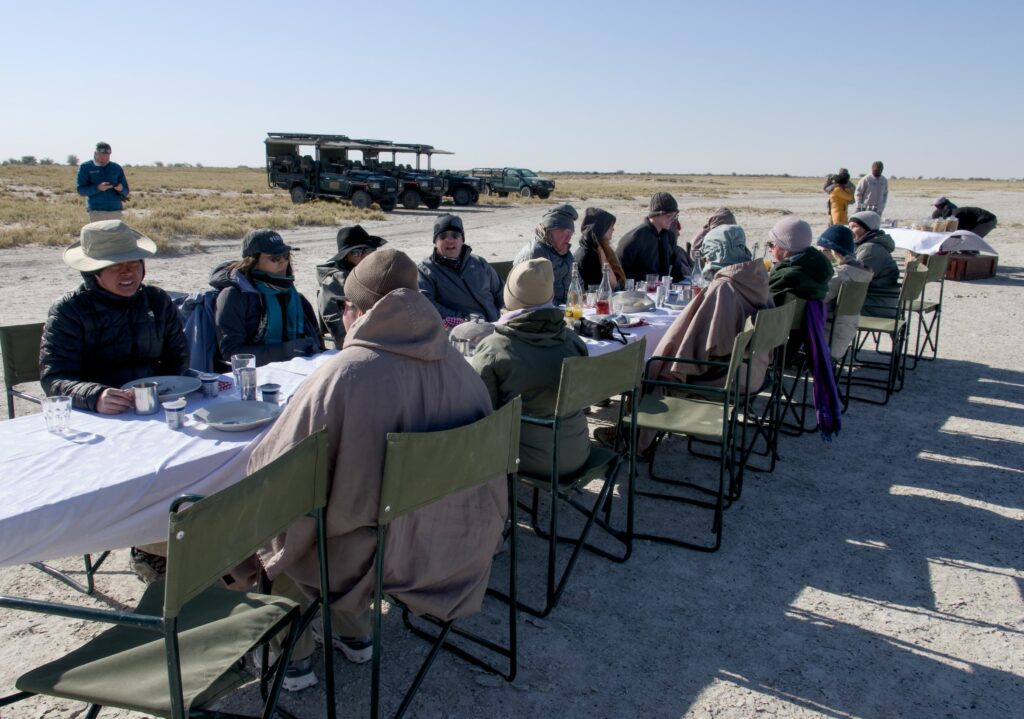
After breakfast it was back to the meerkats to see if they would come out, and they did! We could post about 100 photo of meerkats but below are some of our favorites. Once the meerkats wake up they all leave the borrows and begin foraging for food, digging as they go. Meerkats can range over several kilometers a day in their search for ants, bugs, scorpions and grubs. We followed along for 100 yards as they started their search, eating as they went and at least one sentry always on the lookout. They constantly chirped to each other in a very low tone as if to say, “here’s some lovely bugs.”
Then it was back to camp, spotting along the way…
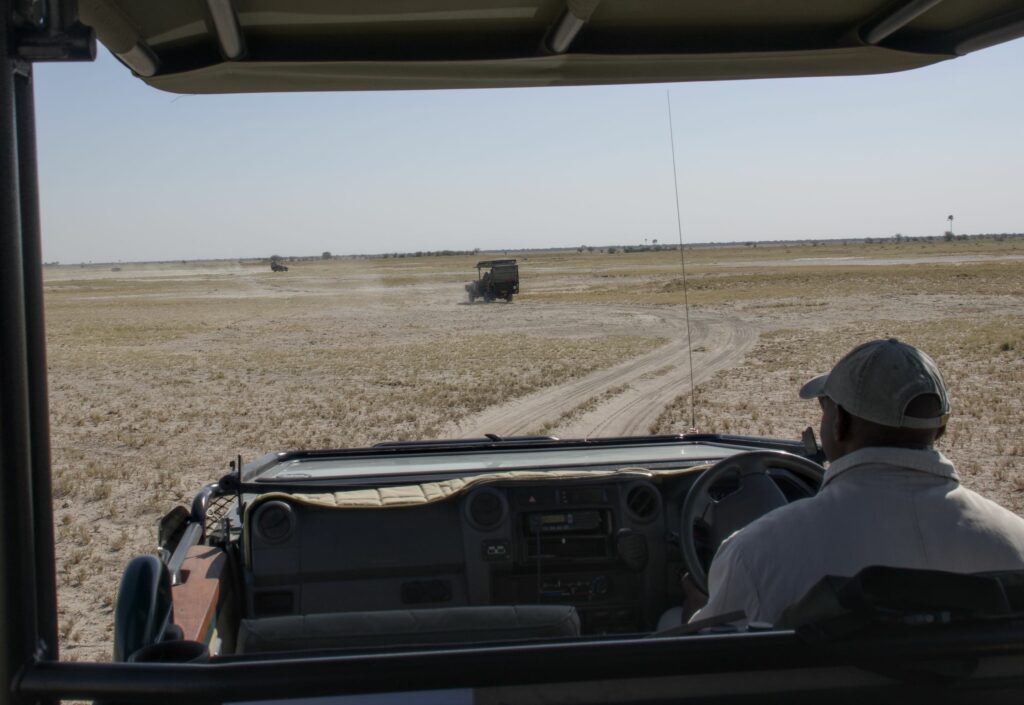
The hornbills were very active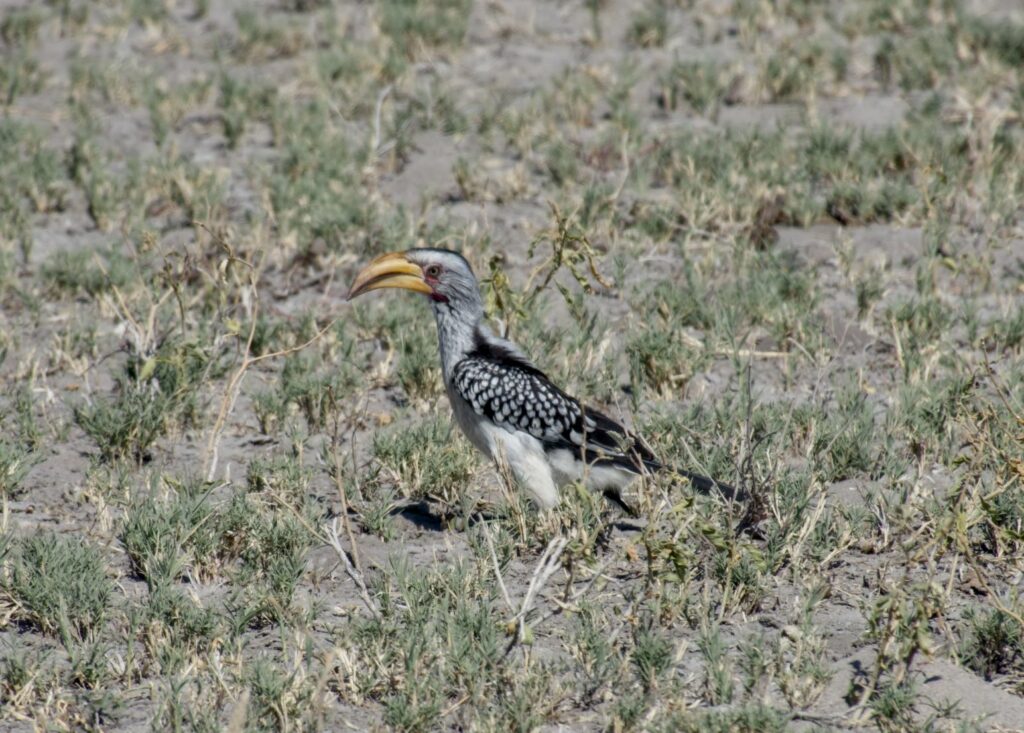
Then it was back to camp for a HOT shower (thank goodness) !
That evening we were off again to the salt pans. Along the way we spotted wildebeest and springbok
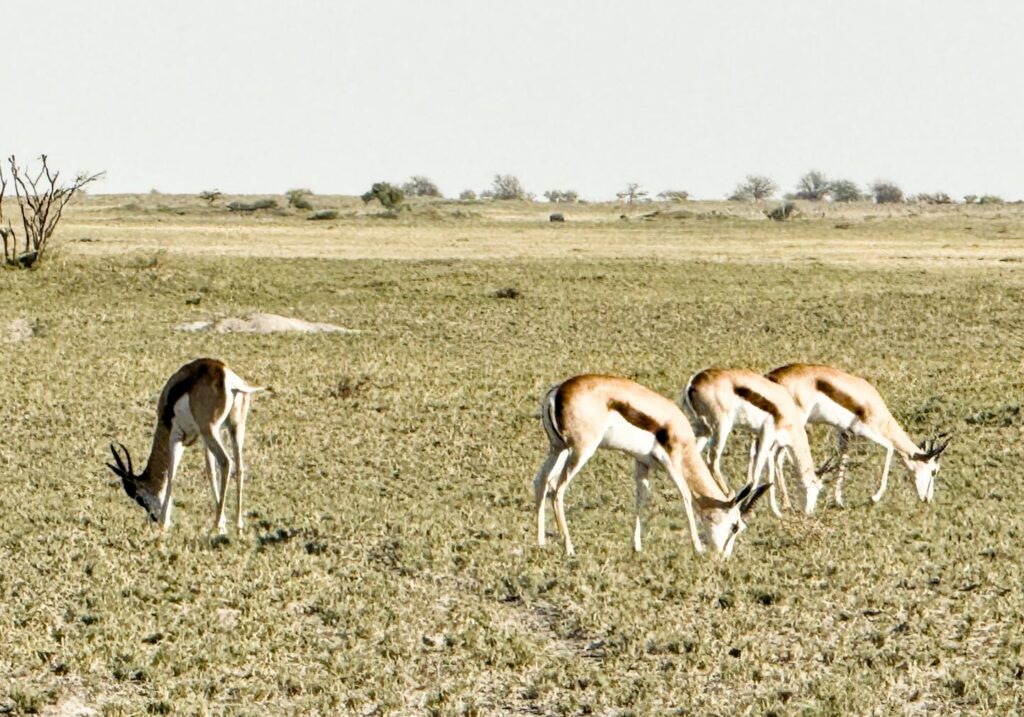
Then we arrived at the salt pan, a vast area covering over 6,200 square killometers. We boarded ATVs and headed out to explore this alien landscape.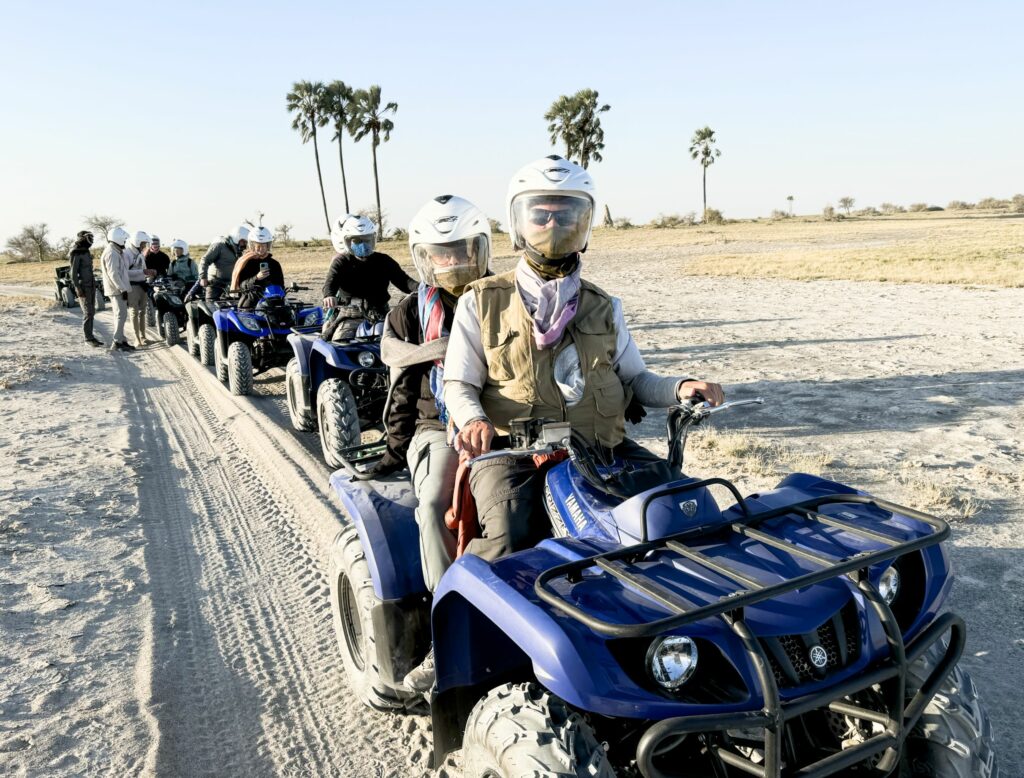
We drove for about 10 miles and stopped for some fun photos…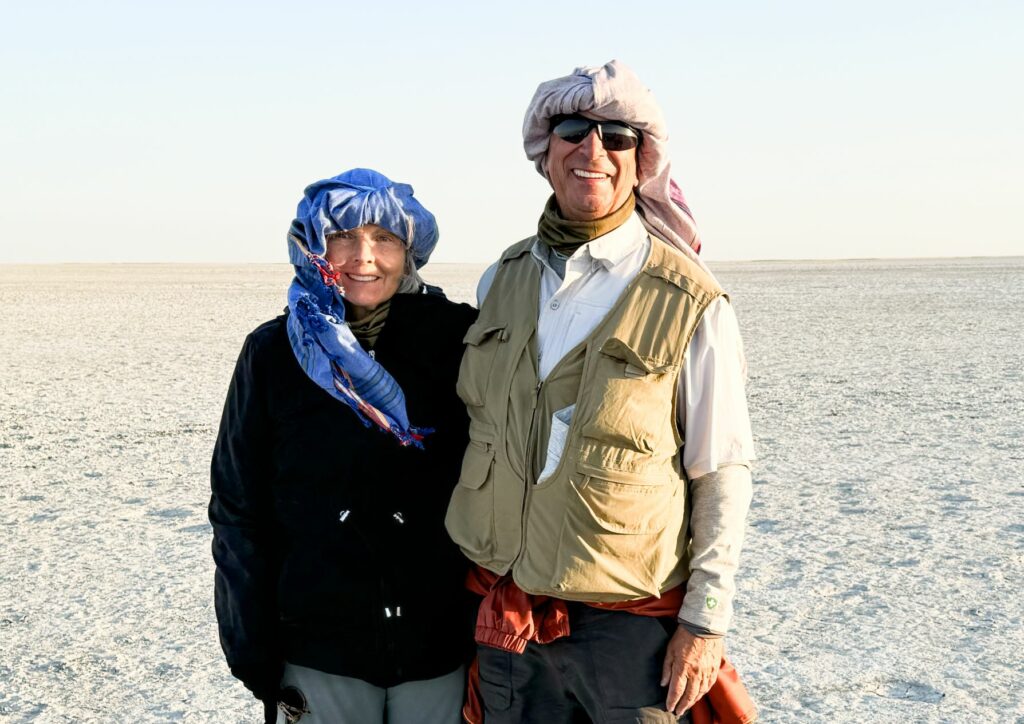
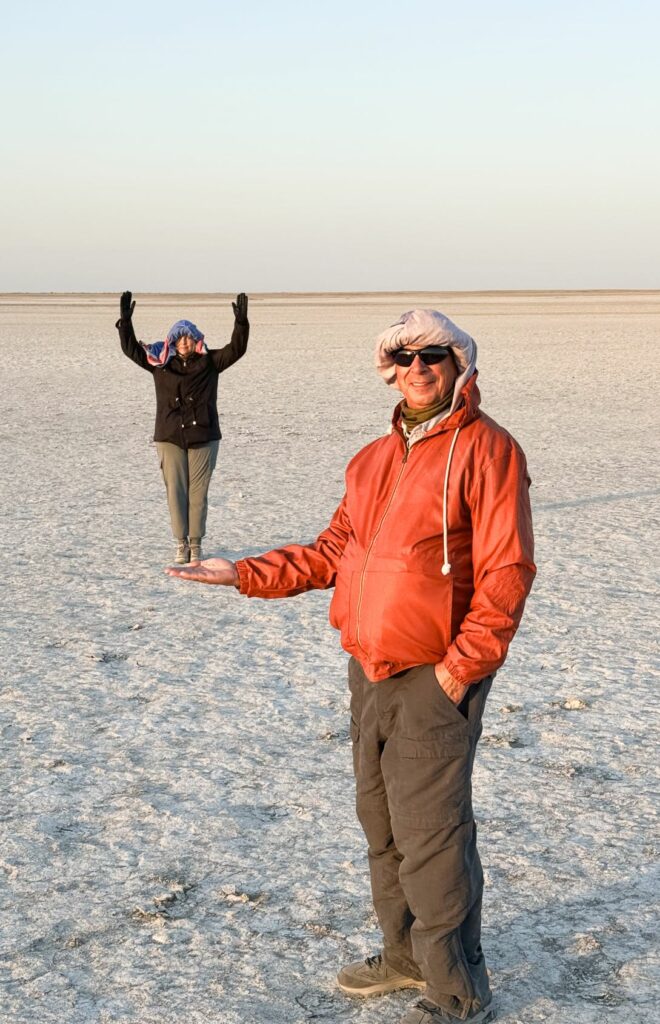
Tim jumped for joy as the sun was setting (actually I think I cleared 10”)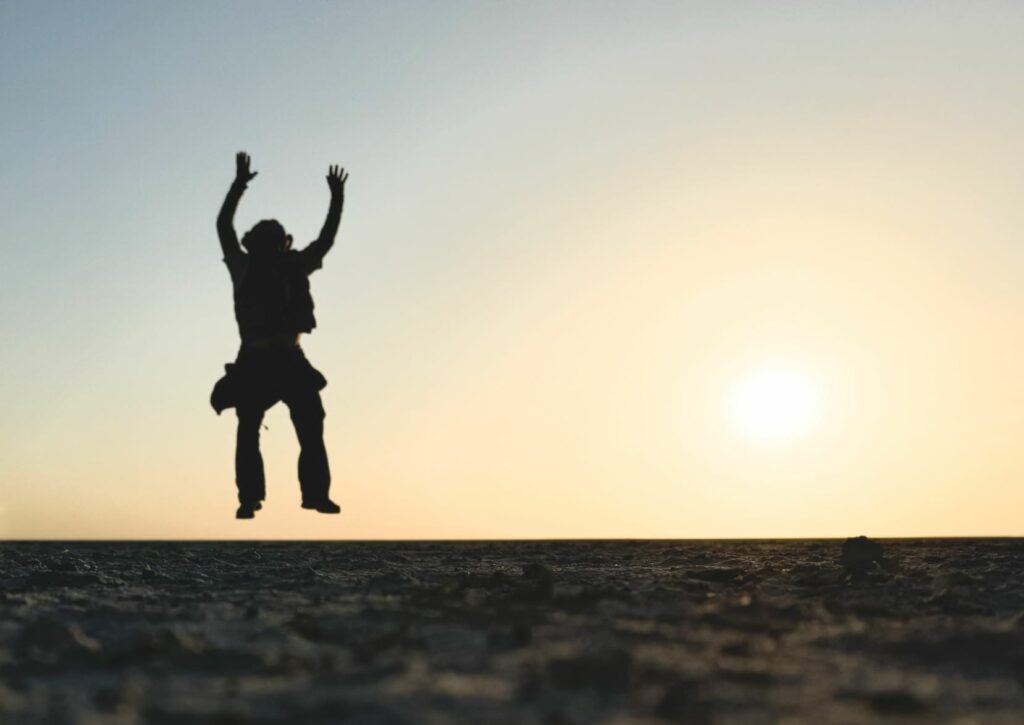
Then it was back on the ATVs for a chilly ride in the dark back to our starting point to meet our Land Cruisers for the final ride back to camp. On the walk back, Tim stopped for a photo of the stars, amazing what the iPhone can do. That fuzzy cloud you see is the Milky Way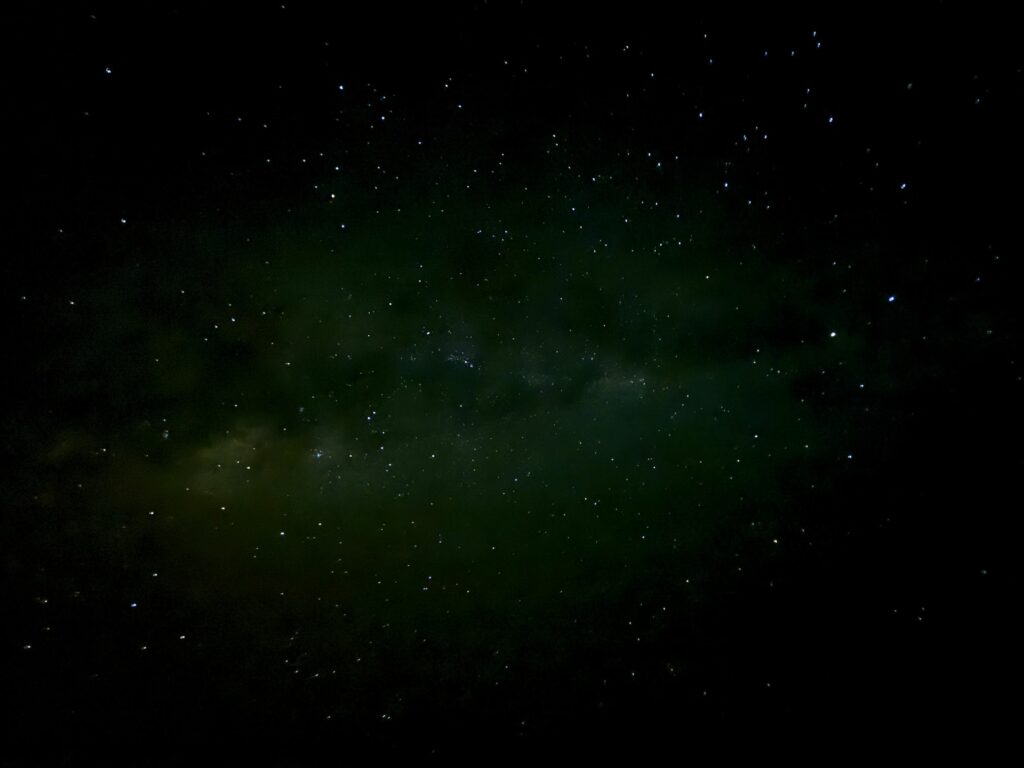
A beautiful way to end a beautiful (but cold) day. Back to our beds and our warm bush babies.

